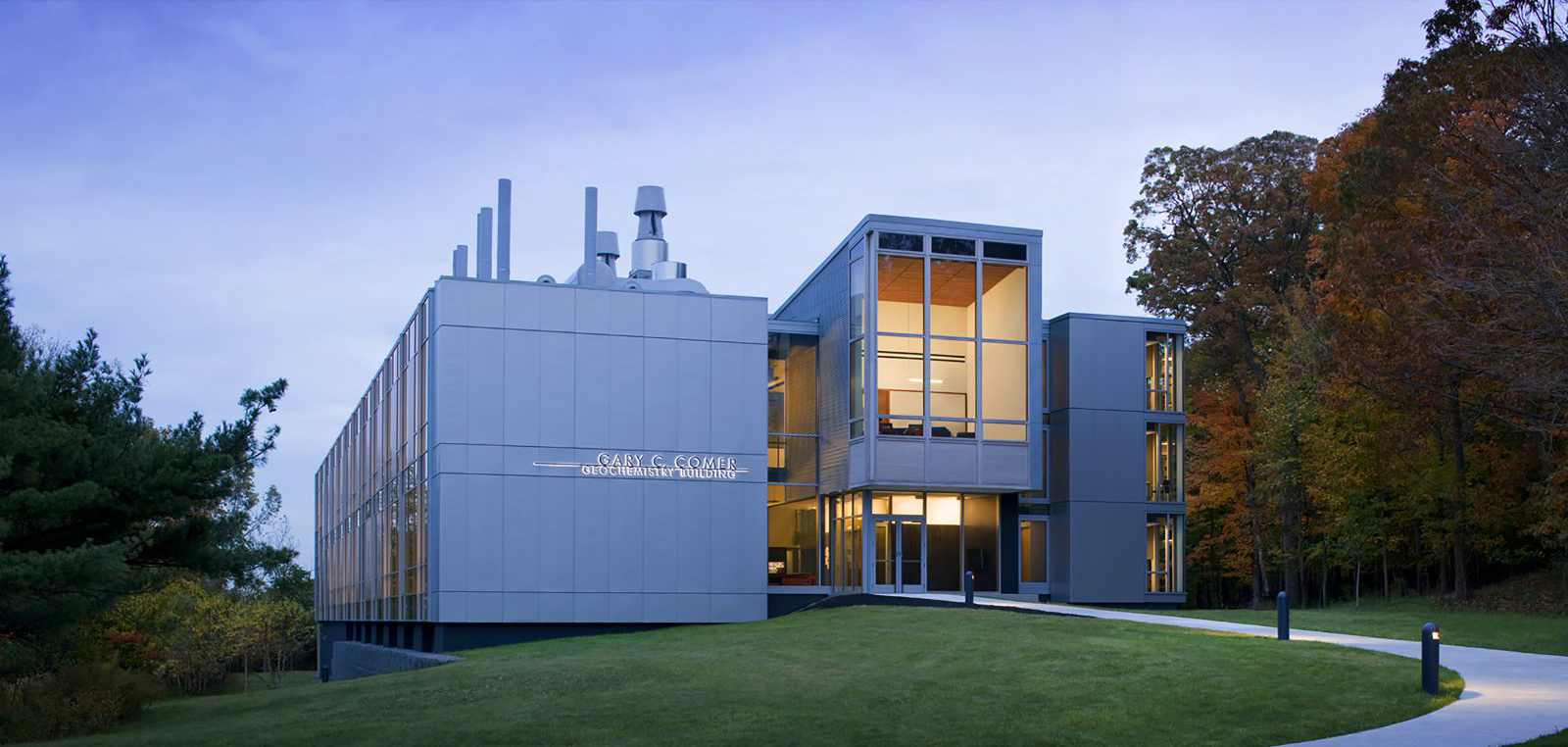Gary C. Comer Geochemistry Building

The Gary C. Comer Geochemistry Building was constructed at the Lamont-Doherty Earth Observatory to meet the necessity to conduct advanced earth science and environmental research. The building is 67,000 square feet, two stories tall, and houses more than 70 offices and 30 laboratories for scientists, students and support staff.
About the Project
Architect: Payette Associates, Inc
Completion Date: Winter 2008
Square Footage: 63,000 gross square feet
Stories: 2
- LEED Silver Certification
- Lab of the Year by R&D Daily and the Scientific Equipment and Furniture Association
- Merit Award for Excellence in Architecture for a New Building by the Society for College and University Planning and the American Institute of Architects Committee on Architecture for Education
- Sustainable Design Award, sponsored by the Boston Society of Architects Committee on the Environment and the American Institute of Architects
- LEED Silver Certification
- Standards outlined by the Labs21 Approach, a voluntary program sponsored by the Environmental Protection Agency and the U.S. Department of Energy to improve the energy efficiency and environmental performance of laboratories
- Site selection for the conservation of trees, vegetation, open space, and wildlife habitat as well as the mitigation of impact on the Hudson River, Palisades Interstate Park and Lamont Nature Sanctuary view sheds
- Porous pavement and infiltration systems to collect storm water from the roof and parking lot, reducing runoff by 20% and providing 100% soil contact for pollutant removal
- Ultra-low-flow plumbing fixtures
- Irrigation-free landscaping
- Close proximity to public transportation and bike racks for cyclists
- Air conditioning system that uses high efficiency chillers with non-depleting refrigerants
- Occupancy sensors to control lighting and temperatures
- Energy recovery from the ventilation system
- Daylight harvesting and high efficiency light fixtures
